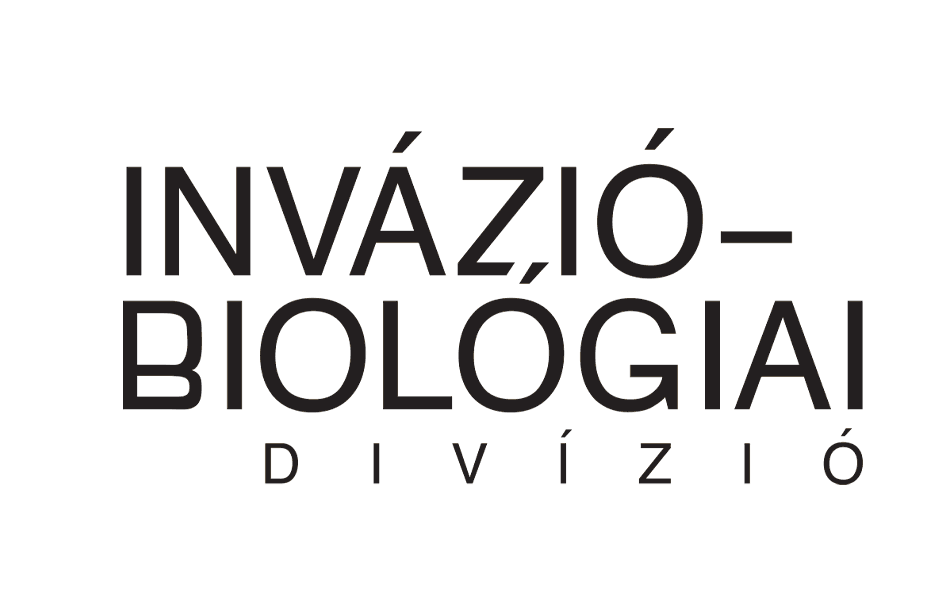Program – 2. nap
2025. február 27. (angol nyelvű előadások)
8:00-9:00 Regisztráció
8:00-9:00 Reggeli
9:00-10:00 Plenáris előadás – Petr Pyšek: Macroecology and biogeography of plant invasions: what have we learned from large databases?
10:00-11:00 – 1. szekció – levezető elnök: Botta-Dukát Zoltán
Normál előadások
Diaz-Cando Patrícia Elisabeth: Enemy behind the gates? Predicted climate change might facilitate C4 grass invasion in European grasslands
Kröel-Dulay György: The invasion of sand dropseed (Sporobolus cryptandrus), a C 4 perennial bunchgrass, in sand grasslands of Central Europe
Török Péter: Soil seed bank of the invasive sand dropseed (Sporobolus cryptandrus) poses a future challenge for its suppression
Csecserits Anikó: Estimating the dispersal potential and impact of Opuntia humifusa, a new alien plant: the basis of early warning and management
Villám előadások
Kelemen András: Mapping cacti that have escaped human control in Hungary
Schmidt Dávid: A strong invasion wave of mediterranean grass species has reached the Carpathian Basin
11:00-11:30 Kávészünet
11:30-12:30 – 2. szekció – levezető elnök: Ódor Péter
Normál előadások
Mally Richard: Historical invasion rates vary among insect trophic groups
Shally Gergely: Changes in population size and distribution areas of game species in Hungary between 1997–2022
Rigó Attila: Non-native and potentially invasive plants in Budapest
Litlekalsoy Nathanael J.: Hungry Hungry Harmonia – Using Functional Genomics to Measure the Predatory Impact of Invasive Ladybirds Harmonia axyridis
Szilassi Péter: Artificial intelligence-based methods in invasion biology research: case studies from Hungary
12:30-14:00 Ebéd
14:00-15:00 Plenáris előadás – Piero Genovesi: Management of invasive alien species: challenges and opportunities to mitigate the impacts of biological invasions
15:00-16:00 – 3. szekció – levezető elnök: Valkó Orsolya
Normál előadások
Mologni Fabio: Time since first naturalization is key to explaining non-native plant invasions on islands
Bányai Zsombor Márk: The signal and the red swamp crayfish in the Carpathian Basin: present status, distribution and the impacts of the colonised ecosystems
Weiperth András: Are we really able to do anything, or are we just sitting back and watching? The present status and real effects of non-native decapod, fish, amphibian and reptile species in Hungary
Fodor Eszter: Traditional ecological knowledge and local value categorization of invasive alien plant species of herders and farmers in the Kiskunság
Juhász Erika: Short-term response of an invasive fish species on the beaver-made landscape alterations
Gallé Róbert: Milkweed (Asclepias syriaca) invasion, forest-steppe fragment size and isolation jointly constrain arthropod communities and their functional traits
Villám előadások
Szita Éva: Dispersal of the invasive Indian wax scale (Coccomorpha, Coccidae, Ceroplastes ceriferus) in Hungary
Kiss Orsolya: The threats of the colonization of an alien perennial grass, Paspalum distichum L. to the native floodplain vegetation in Hungary
Ulicsni Viktor: Everything can be useful – invasive and alien animal species in local ecological knowledge in the Pannonian Biogeographic Region
16:30-17:00 Kávészünet
17:00-18:45 4. szekció – levezető elnök: Gallé Róbert
Normál előadások
Csonka Anna Cseperke: Invasion control by sowing native species – effects of propagule pressure, priority effect and trait similarity
Tölgyesi Csaba: Perspectives in the application of hemiparasites to control invasive plants in Hungary
Dufour-Dror Jean-Marc: Controlling Ailanthus altissima with the hack & squirt technique in Israel
Erdélyi Arnold: Chances of controlling Hungary’s worst invasive tree species in forest-steppe forests: from planning to setting up defenses
Villám előadások
Vadász Csaba: Control and containment of woody invasive species in The Peszér-forest
Tóth Ágnes: Laundry washing can support plant invasion by influencing the germination potential of cloth-dispersed seeds
Valkó Orsolya: Human-vectored seed dispersal on clothing can contribute to the spread of invasive and weedy species
Bócsi Balázs: Nutria (Myocastor coypus) eradication program in Northern Hungary
Szabó László: The diet composition of two invasive carnivores, the raccoon (Procyon lotor) and the raccoon dog (Nyctereutes procyonoides) based on stomach analysis
Török Katalin: Multi-species seeding may improve resistance against invasion in a sandy habitat
Kertész Miklós: Frequency of biological invasion in different habitat types in Hungary
Visztra Georgina: Usability of citizen science data for research on invasive plant species in urban cores and fringes: A Hungarian case study
Paulin Márton J: Erythmelus klopomor – A promising candidate for classical biological control against the invasive oak lace bug
Scherman Jakab Máté: Habitat-driven differences in pollen-spore interactions: preliminary results of an invasive weed (Ambrosia artemisiifolia)
Alen Kiš: Example of transnational cooperation for efficient IAS management
18:45 Vacsora


